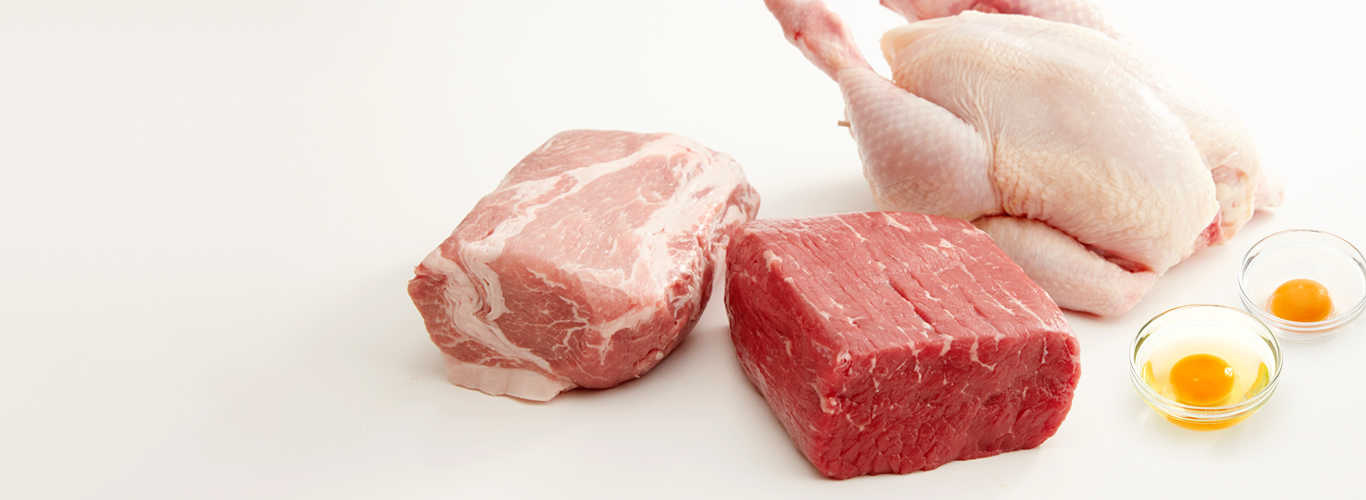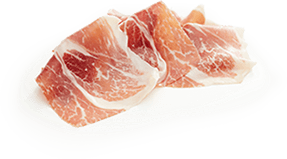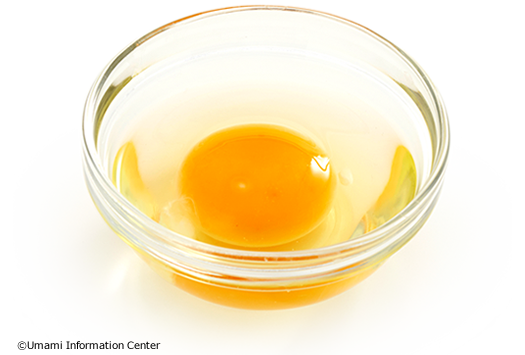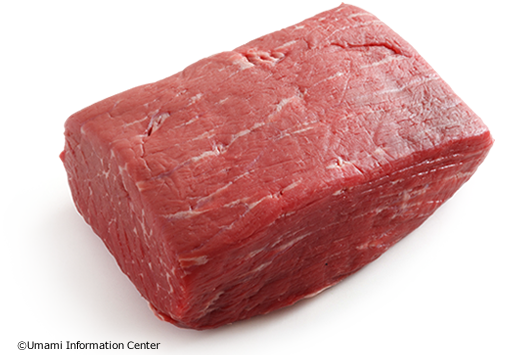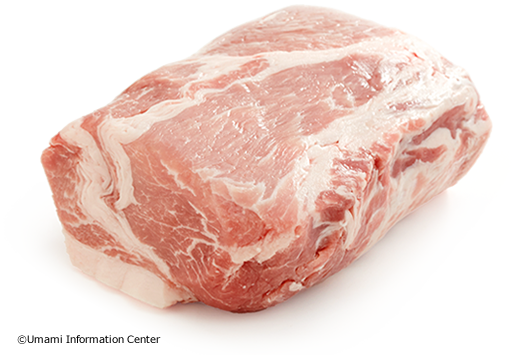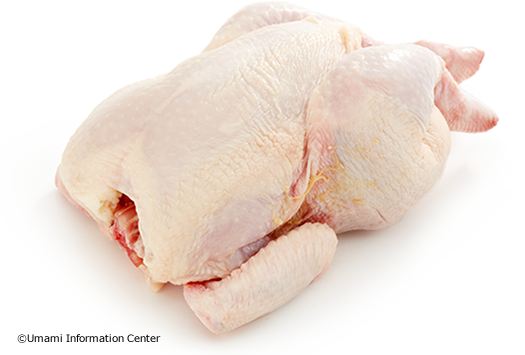Chicken eggs contain high-quality protein with well-balanced amino acids, as well as the vitamins (B6, etc.) necessary to metabolize the protein inside the body. This is why, along with milk, chicken eggs are called “complete foods.” Egg yolks contain the umami compound glutamic acid. Egg whites contain mostly albumin protein, with only trace amounts of free-form amino acids. The large size of the proteins means they cannot be tasted. While there are various ways to prepare eggs raw, boiled, or fried eggs are the main ingredient in many sweets.
- Levels of naturally occurring glutamate(mg/100g):10~20

